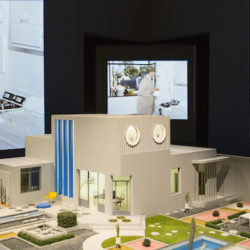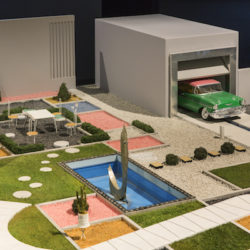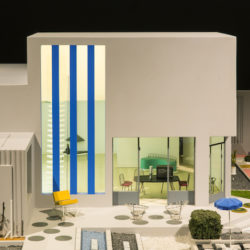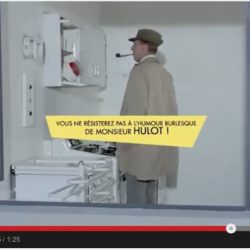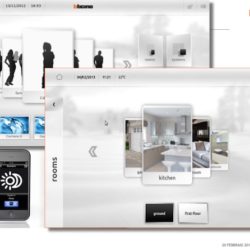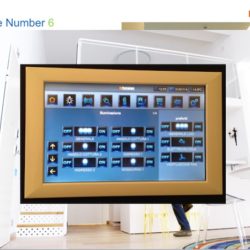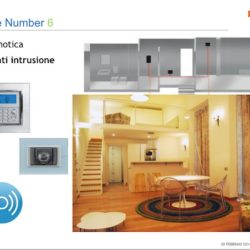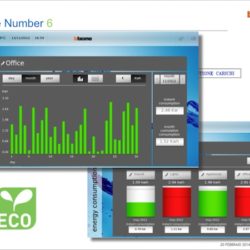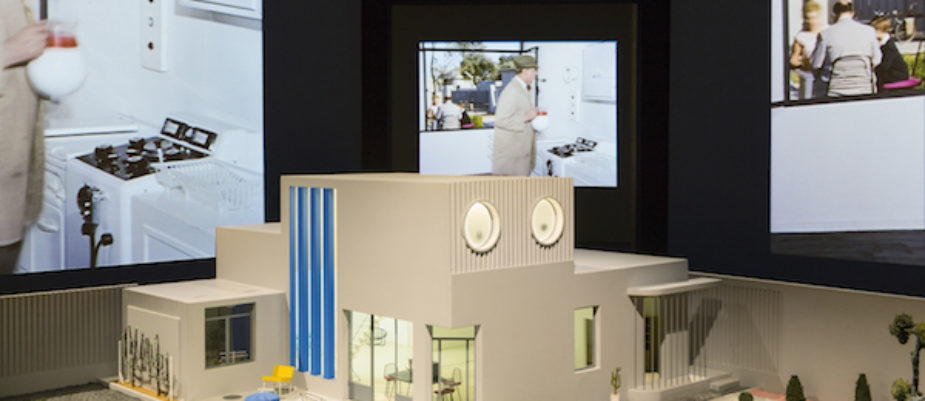
All of us smiled at the irreverent sight of Mon Oncle’s exhibits at the French Pavillion, one of the few lively and ironic offered by the tedious Venice Biennale Architecture directed by Rem Koolhaas. But examples like “Number 6” in Turin demonstrates that Building Automation in sustainable architectural refitting.
The installation at French Pavilion at 14th International Architecture Biennale of Venice ‘Modernity, a Promise or Threat?’’ by Jean-Louis Cohen,(special mention of the Jury) answers with a critica interpretation to the theme “Absorbing Modernity” proposed by Koolhaas, and through specific cases, evokes the contradictions leading to the ‘‘absorption’’ of architectural modernity in France.
The Monsieur Hulot’s Arpel Villa, object of desire and ridiculous machine, symbolizes the dream of a life made better by machines.
Maybe the ludicrous look of the Smart Building offered by the hilarious Mon Oncle (cult movie by Jacques Tati, 1958) could be seen as somewhat disastrous, yet nearly sixty years later we can state that some applications of home automation are not only excellent examples, even in new buildings, but they are also absolutely necessary to upgrade the already existing structures, that comply with standards of environmental sustainability.
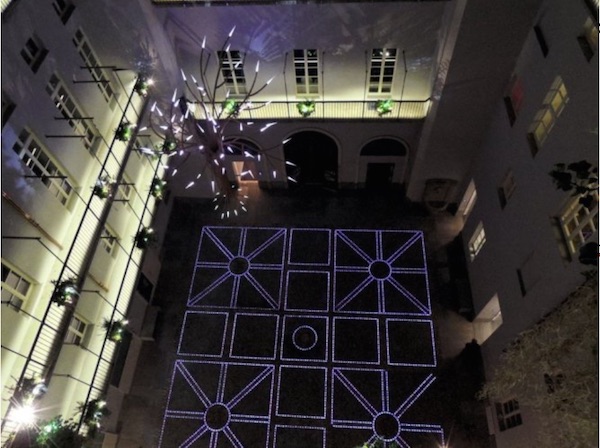
As effectively proved by Number 6 in Turin.
Designed and built in 1663 as a house, Palazzo Valperga, Galleani di Barbaresco e Canelli has changed its use over time and was some years ago an office district with a bank branch. Thanks to the refitting design and the use of BTicino technologies, the Building was recently altered to meet contemporary comfort requirements and standards and has now a dual purpose: first-rate offices and flats.
Smart Building technologies manage and control every inside and outdoor facility: from the lighting in the courtyard to security in the common area, from automated heating and lighting to sound diffusion.
The planning integration of Smart Building technologies, the necessary key to attain a top-quality functional and aesthetic result, allows a steady monitoring and a clever management of resources and guarantees a Smart and Green life cycle of the building.
Credits French Pavilion Biennale Architecture Venice:
curator Jean-Louis Cohen,
design by agency Projectiles (Reza Azard, Hervé Bouttet and Daniel Mészaros).
3D/360° virtual visit by Abvent
Model by Abvent and Projectiles
Infographics : Stéphane Desmulie, Abvent.
photo copyright © LUC BOEGLY / Pavillon français pour l’Institut français et le Ministère de la Culture et de la Communication.

